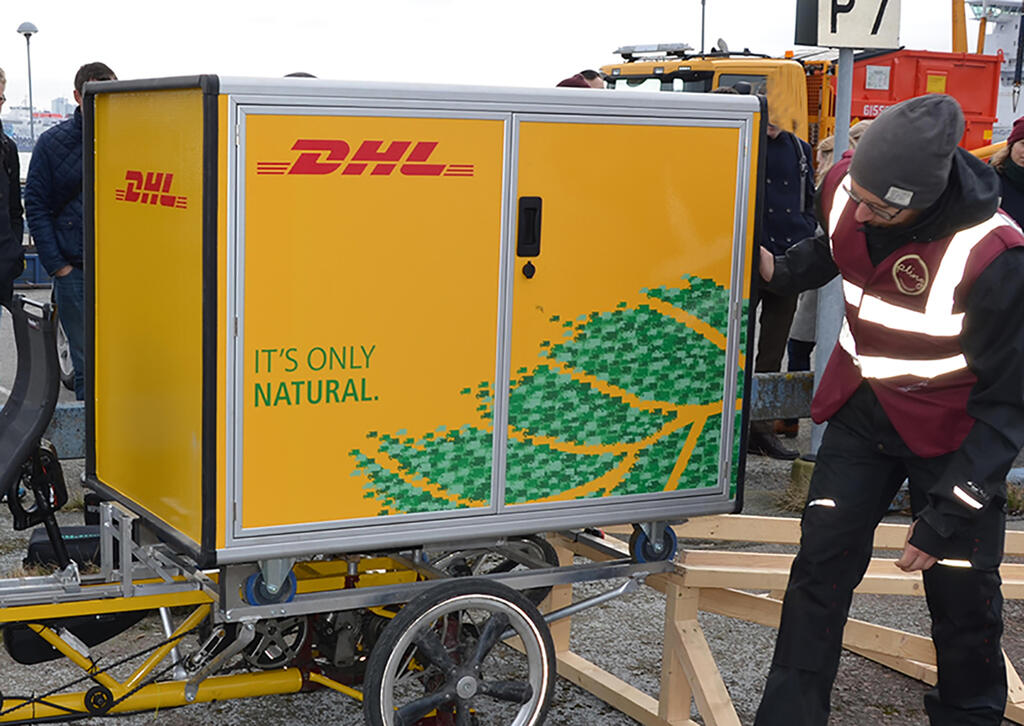Innovative transport solutions for future dense cities
Many interested people met on Lindholmskajen quay in Gothenburg to watch the demonstration of how transporting goods and waste by water could become part of the city’s transport solutions. The demonstration was held under the DenCity framework, a collaborative project between industry, academia and society run by CLOSER, at Lindholmen Science Park.

Transporting goods and waste by barges on waterways such as the Göta River will replace delivery and garbage trucks and make better use of urban spaces. Using electric-powered vehicles or bicycles also means that deliveries can be made quietly without emitting exhaust fumes in the city.
Martin Svanberg, a researcher at SSPA is the project manager, and he explained why the demonstration was arranged.
“Cities are becoming denser and thus more people, more goods and more waste need to be transported. As we all know, the roads are already very congested while waterways are almost an untapped resource. There is a great deal of space available for transporting goods and waste, which would relieve the pressure on the roads and, in doing so, reduce both congestion and noise pollution. Electric-powered barges could also be used as an entirely fossil-free mode of transport.”
Other project partners include the City of Gothenburg (Traffic Administration Office, Urban Planning Department, Ecocycle and Water) and Älvstranden utveckling, while the demonstration was carried out by DHL Freight, Pling Transport, Primär, Sandinge and Renova. It took one year to design the demonstration on the Göta River and focus was on logistical arrangements, which at this stage involved testing a flow that could be scaled up and create real benefit to society in the future. During the two-week project, the barge collected package freight every day from DHL in Hisings Kärra, a couple of kilometers upstream from Gothenburg city center, which was then unloaded in the city center at Lindholmen for onward distribution by Pling by bicycle and by Primär by electric vehicle. Waste was then transported from Lindholmen to Sävenäs for recycling to electricity and heat.
“We have many parties involved in the project and we hope that it will result in someone taking the lead and venturing to continue with it. There is great potential – about 25,000 new homes and 45,000 place of work will be built along the water, which means up to 14-15 garbage trucks a day could be replaced by barges, thus relieving the Gothenburg road network” says Martin Svanberg.
“It is a complex project and we all need to come together to make progress. That is why arenas such as CLOSER, and the collaborative project DenCity, are so important,” says Malin Andersson, head of department at the City of Gothenburg’s Traffic Administration Office.
The DenCity project is a collaboration between industry, academia and society which is ongoing from 2015 to 2018. It is led by CLOSER at Lindholmen Science Park, the national arena for collaboration in transport efficiency. Approximately SEK 20 million will be invested in the project, with half financed by Sweden’s innovation agency, Vinnova, and the remainder by the participating partners. Region Västra Götaland is a co-financer for this part of the DenCity project. Read more about the project and its participants here www.dencity.se.

